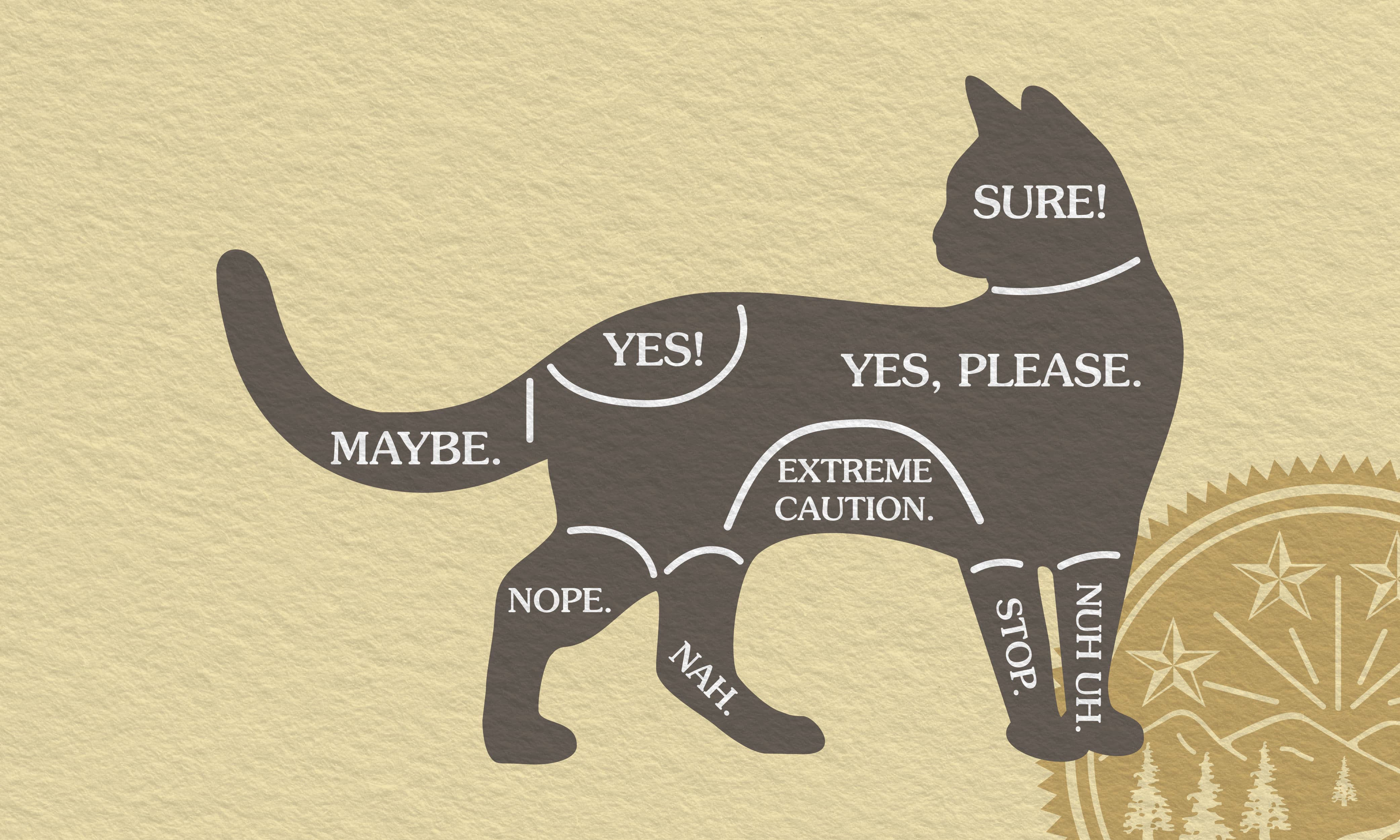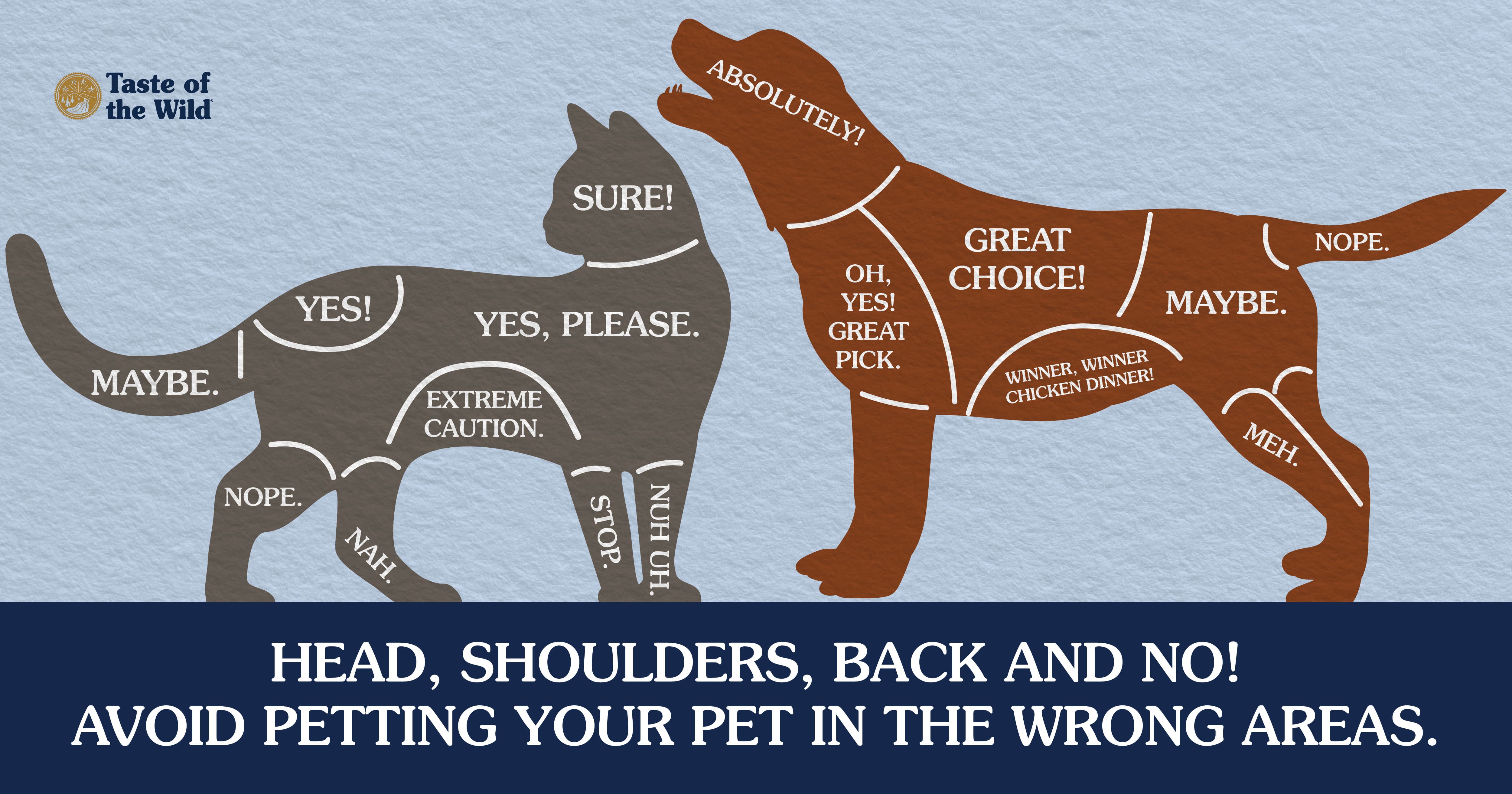Head, shoulders, knees and noooo! As much as your pet probably likes all sorts of snuggles, it’s possible to pet your furry companion in areas they don’t like and invoke the claws, growls or side eye. Cats and dogs have spots on their body they prefer you pet over others — and it’s worth noting cats might have different “don’t pet” areas than dogs. Here are some tips to make sure you have petting down pat. Just remember that every pet is different, and your best bet is to know their body language for signs of discomfort.
How to Best Pet Your Dog
Research shows petting your pup boosts their level of happiness (and maybe even yours). Cue the TikTok audio, “I’m just a happy, happy dog,” as you bend down to their level, extend your hand and let your canine come to you. Your pet’s body language will speak volumes to let you know if now is the right time for all the pets.
A dog that comes your way when you extend your hand wants to be petted. If their eyes look happy and their tail is wagging, this is another indicator it’s petting time! Pet, pat or scratch your doggo, going with the fur, not against it. They don’t want that bed head look when you’re done petting them.
If your pupper starts to put space between you, begins licking their lips or raising their paw, this indicates now is not the right time for petting. In addition, a dog that is sleeping or playing will likely not want to be interrupted for petting time.
Animals not wanting to be petted is nothing to take personally. If you move forward with unwanted petting, you increase your chances of being growled at or bitten. Therefore, it’s best to listen to what your dog is telling you.
What areas should you focus your petting on?

Not all dogs are the same, but typically canines prefer to be petted on their head, neck, chest, belly and middle back. When you find their sweet spot, your dog might start to kick their leg with joy. And if you roll over a spot that they don’t want you to touch, you’ll notice a shift in the way they respond. Areas to typically avoid petting include their tail, legs and paws. The lower back is a “maybe,” so pet this area with caution.
How to Pet Your Cat
Cats can be a little more standoffish than dogs, but that doesn’t mean your feline doesn’t want to be petted. They love attention from their people, as well! You might need to be a bit more in tune with your cat’s body language to know how and when they want to be petted.
You’ll also want to note that contrary to dogs, cats do not believe in the phrase “Give me all the pets!” Typically, cats prefer to be petted in smaller increments of time than your needy, needy dog.
Prior to petting, be sure you have your cat’s attention. Do not sneak up for a surprise petting. This could result in a draw of the claws. Let your cat sniff your hand or perk up with excitement.
Next, gently pet your cat, moving in the same direction as their fur, just like we recommended for doggos. If they begin to lean into your hand for more pets (bunting), relax their posture, knead or purr, you know you’re on the right track.
If your cat gently nips or paws at you during a petting session, you might need to readjust your touch. You might be petting too firmly. You might need to scratch behind their ears instead of petting their belly. Or they might want to be patted on the lower back opposed to just pets on the head. Adjust your level of firmness and location of petting until you find the sweet spot for your furry feline.
Aggressive jerks of their body or head can indicate your cat does not want to be petted. Raising a paw to bat at you, hissing and meowing in an unfriendly tone also indicate it is time to step away. Your cat will give you direct cues so you know what your next move should be. Listen to their desires — even if it means resisting the urge to pet them at that moment.
What areas should you focus your petting on?

While it’s true that each cat has their own wants and needs, studies show there are general areas that cats prefer to be petted. Felines favor being petted near their scent glands — all around their ears, on their cheeks and under their chin. Another highly preferred area is the lower back right before you reach their tail. The rest of their back and their sides are good spots to pet, but they don’t go as gaga over these locations.
Belly rubs are iffy territory. We say lean into this spot with caution. Some cats say, “Yes, please” while others say, “No, thank you!” Steer clear of the tail, legs, paws and toe beans for pets. Cats typically don’t prefer to be petted there.
When following the advice above, hone in on how your fluffy friend responds to touch. Adjust your petting techniques and the length of time you’re petting them to meet your animal’s needs. The right form of petting strengthens your bond with Mittens and Fido, and in the process, petting can boost your overall mood as well. A win-win all around!
RELATED POST: A Taste of the Wild Guide to Pet Grooming
The information in this blog has been developed with our veterinarian and is designed to help educate pet parents. If you have questions or concerns about your pet's health or nutrition, please talk with your veterinarian.

